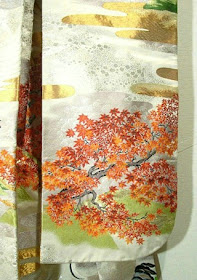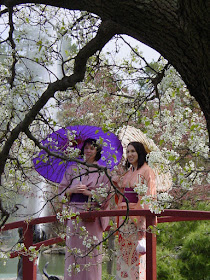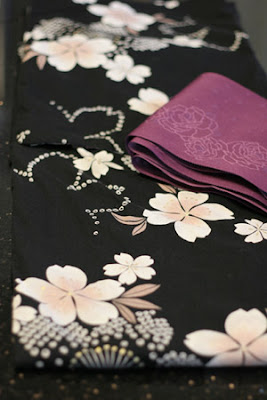If you're familiar with the Japanese street fashion Lolita (bell-shape dresses and skirts, modest and high-quality clothing), you may know the big brands put out yukata every summer. Gothic Lolita-friendly brands like h. Naoto might have ones dripping in bats and chains, while brands known for Sweet (cute/pink/girly) Lolita like Angelic Pretty debut yukata covered in things like strawberries and lace patterns.
I never saw any I really liked until I chanced upon this red and pink one for sale secondhand, made by popular brand Metamorphose temps de fille (or "Meta" for short). It's almost too cute for my personal style, but I love it anyway!
As you can see, it keeps the traditional shape and construction of yukata while working in non-traditional motifs. For a more muted Sweet feel, I tossed on an obi with hearts, a rose and pearl corsage, and added a little pink jewel crown for a hair accessory. For shoes I'm thinking traditional geta (sandals) with pink straps or cute pink low heels.
I may wear this at the next convention I do a panel at... we'll see!
So, do you have any non-traditional yukata? Send me pictures and I'll be happy to post them. :)
I never saw any I really liked until I chanced upon this red and pink one for sale secondhand, made by popular brand Metamorphose temps de fille (or "Meta" for short). It's almost too cute for my personal style, but I love it anyway!
As you can see, it keeps the traditional shape and construction of yukata while working in non-traditional motifs. For a more muted Sweet feel, I tossed on an obi with hearts, a rose and pearl corsage, and added a little pink jewel crown for a hair accessory. For shoes I'm thinking traditional geta (sandals) with pink straps or cute pink low heels.
I may wear this at the next convention I do a panel at... we'll see!
So, do you have any non-traditional yukata? Send me pictures and I'll be happy to post them. :)
And if you'd like a street-fashion style yukata, try these on Amazon:





.jpg)

























